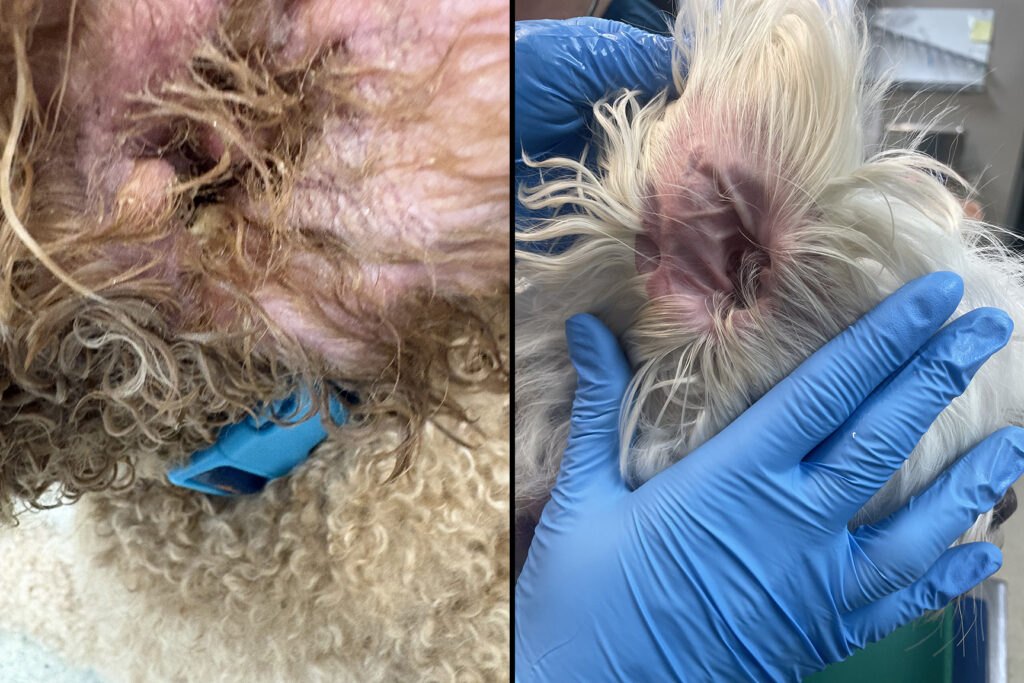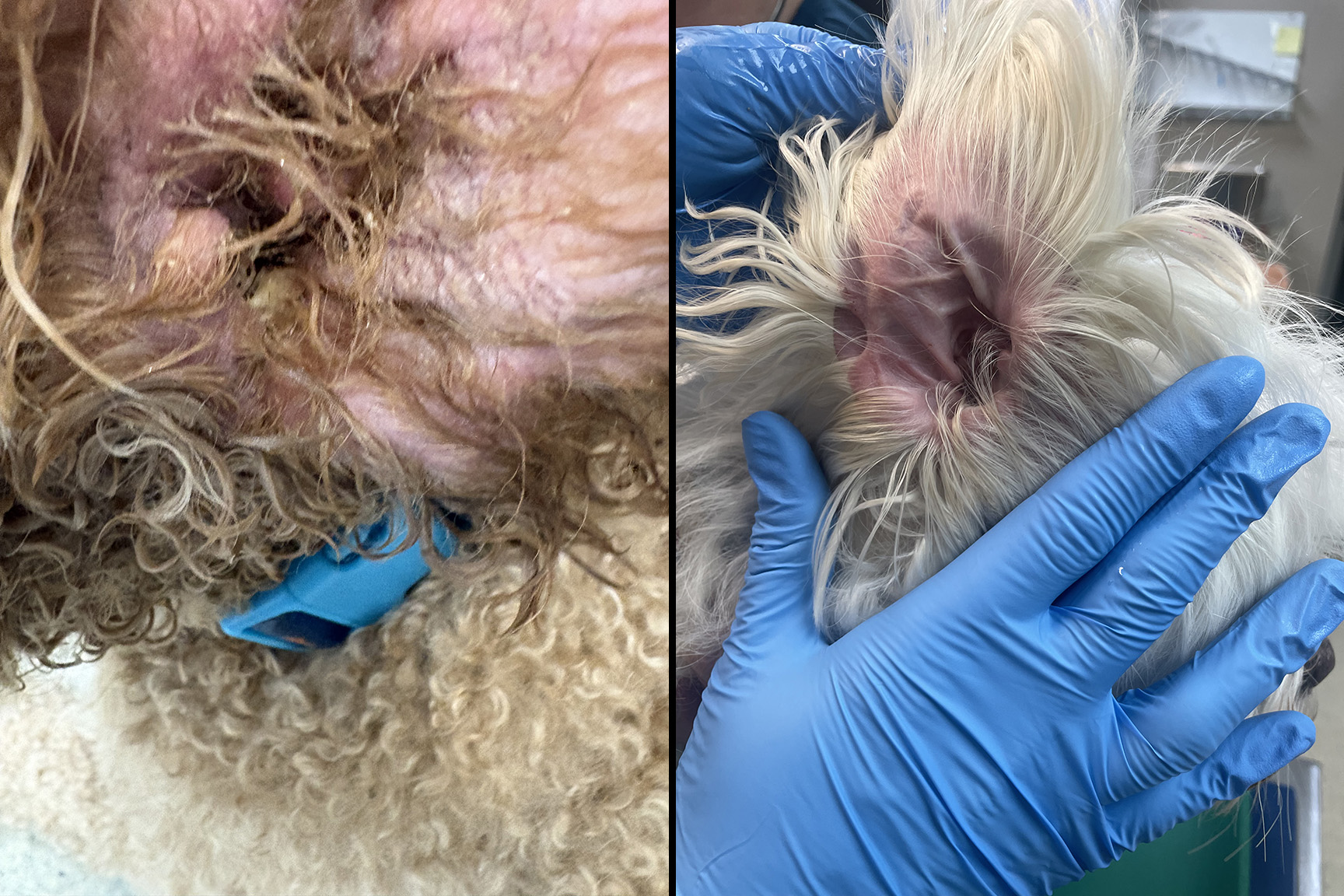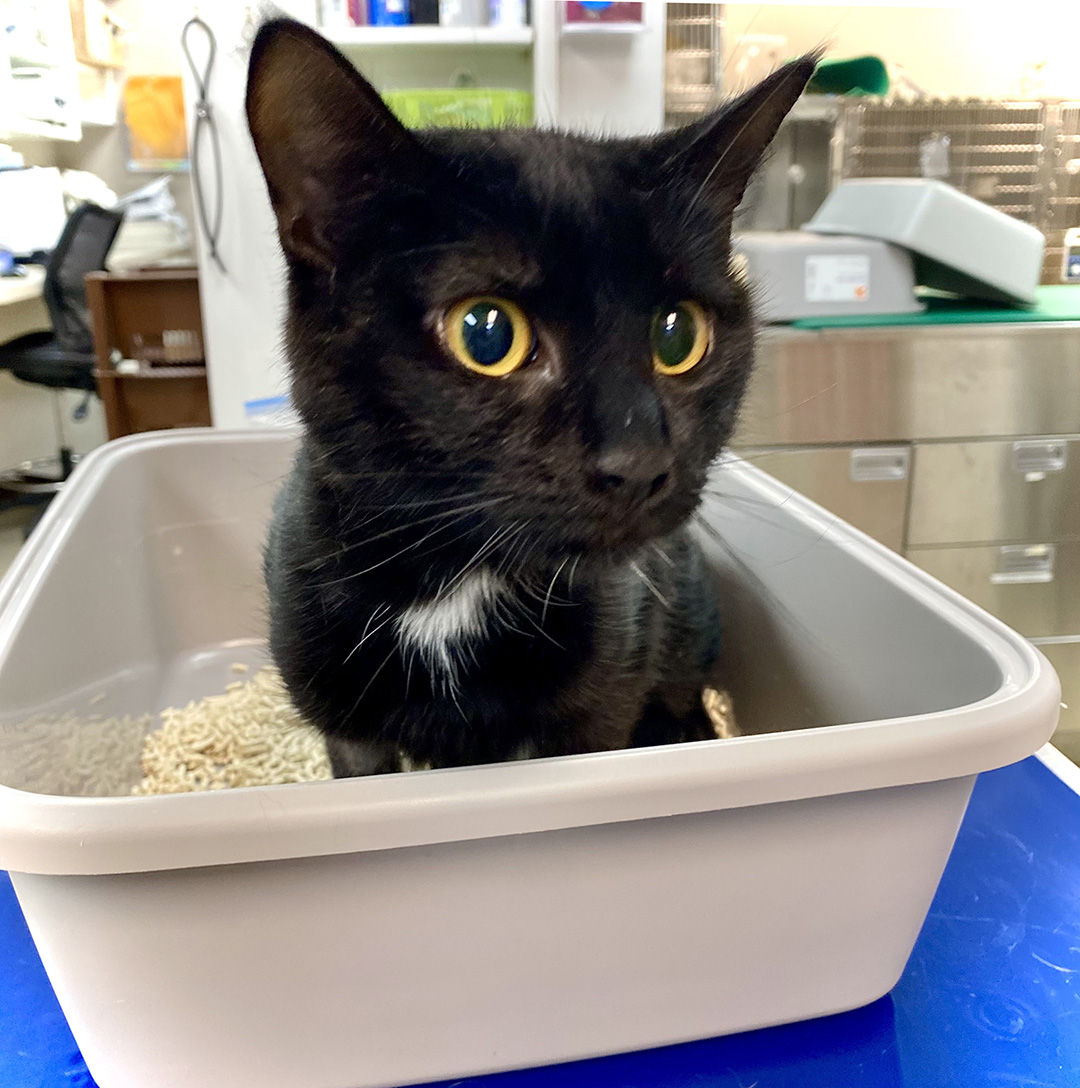Ear Infections in Dogs and Cats
As veterinary professionals, we often see dogs and cats brought into the clinic with head shaking, scratching, and smelly ears. These are signs that usually point to an ear infection. These infections can be painful to your pets and frustrating to you as an owner. If left untreated, ear infections can become chronic and harder to manage. Understanding why ear infections happen and how to prevent and treat them is key to keeping your pet healthy and happy.
What Causes Ear Infections?
Ear infections in pets usually affect the outer ear canal (called otitis externa), but if left untreated they can spread deeper into the middle or inner ear. Some of the most common causes are allergies, ear mites, moisture trapped in the ear, foreign bodies, and underlying health conditions.
Even if one of these most common causes start an ear infection, secondary issues can make it worse. Overgrowth of yeast or bacteria naturally live in your pet’s ears, but if the ear environment changes they can multiply rapidly. Chronic inflammation causes ongoing irritation that thickens the ear canal, making it hard for air to flow and harder to treat the infection.
Some pets are simply more predisposed to ear infections because of their ear shape, such as dogs with floppy ears like cocker spaniels, basset hounds, or labradors. Breeds like poodles and Shih Tzus often grow hair inside the ear canal which can trap wax and debris, and some pets have narrowed or misshapen ear canals that make them more susceptible.
Signs your pet may have an ear infection
Your pet can’t tell you their ear hurts, but they can show some of these common signs and symptoms: head shaking or head tilt, scratching at one or both ears, redness or swelling around the ear flap or canal, bad odor from the ears, discharge (which can be brown, yellow, or black), sensitivity or pain when touching the ears, or hearing loss. If your pet is showing any of these signs, a visit to the vet is the next best step.
How to treat ear infections
Our veterinarian will examine your pets ears with an otoscope (a lighted instrument to look into the ear canal) and may collect a sample from the ear to look under a microscope. This helps us to determine what organisms (yeast, bacteria, mites) are present and the best course of treatment. Proper ear cleaning is essential. Our veterinary team will perform a thorough ear cleaning in the clinic and provide instructions for a cleaner for home care. Cleaning helps remove debris so medications can work more effectively.
Depending on the type and severity of the infection, your pet could be prescribed topical ear medication containing antibiotics, antifungals, and/or anti-inflammatory ingredients, oral medications, or anti-parasitic treatments if ear mites are involved. Treating the infection is just part of the solution — long-term relief often requires treating the underlying cause such as allergies. Once we diagnose an ear infection, a recheck visit is necessary for us to re-swab the ears to confirm the infection has resolved.
How to prevent ear infections
While not all ear infections are preventable, you can reduce your pets risks by drying ears thoroughly after baths and swimming, performing routine ear cleaning using a vet-approved ear cleanser, monitoring for allergies, and scheduling regular checkups, especially if your pet has had previous infections.
So when do you call the vet?
If your pet is showing any signs of an ear problem, or if you notice an odor, discharge, or redness, then it’s best to schedule an appointment. Ear infections can worsen quickly, and the sooner we treat them, the better the outcome for your pet.
As your veterinary care team, we’re here to help guide you through treatment, prevention, and any long-term management your pet may need for ear infections. If you have questions or need help with ear cleaning, medication, or preventing further infections, don’t hesitate to reach out. We’re here for both you and your pet.



